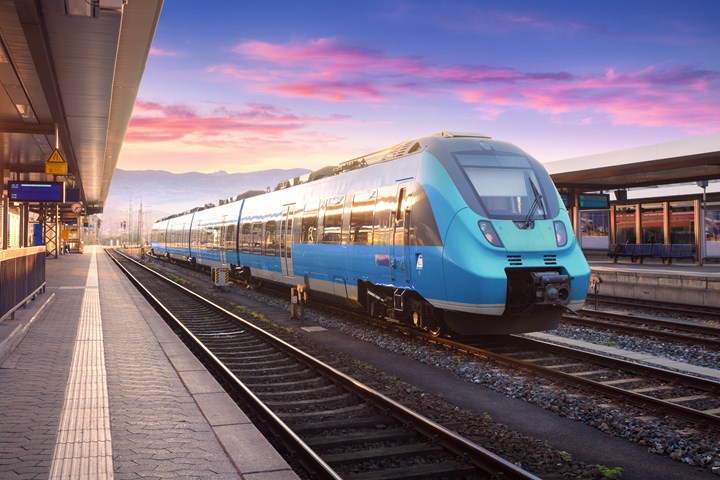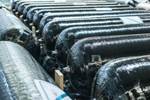Hexagon Purus to supply composite pressure vessels for U.S. hydrogen-powered commuter train
The contract includes the development and approval of a developed cylinder storage system, with a hydrogen-powered train built and transferred to California by 2023.
 Photo Credit: Getty Images
Photo Credit: Getty ImagesHexagon Purus GmbH (Kassel, Germany) announced on Nov. 6 that it has signed a contract with Stadler Rail in Switzerland to develop a cylinder storage system for what it says is the first hydrogen commuter train in the U.S. Hexagon Purus will apply its all-composite Type IV pressure vessel technology for this project.
Further, contract includes the development and homologation (granting of approval) of a new cylinder and tank system to be approved in the U.S. The train will be built and tested in Switzerland and other European locations, then transferred to California in 2023.
“In the midst of the climate crisis, the demand for solutions that help reduce emissions across transport industries is growing rapidly. Hydrogen-powered trains are a smart solution to reduce local emissions without incurring the high cost of electrifying the tracks,” says Michael Kleschinski, executive VP of Hexagon Purus. “We are pleased to help with the further development of the infrastructure need for this ground-breaking move in public transit.”
This contract represents the second hydrogen rail project that Hexagon Purus has supported since the introduction of the world’s first hydrogen-powered commuter train in 2018.
Hexagon Purus’ storage system is due to be delivered in the fourth quarter of 2021.
Related Content
-
Polar Technology develops innovative solutions for hydrogen storage
Conformable “Hydrogen in a Box” prototype for compressed gas storage has been tested to 350 and 700 bar, liquid hydrogen storage is being evaluated.
-
We4Ce infused 2.5-3-MW rotor blade design passes validation test
Composite rotor blade structure design by We4Ce, mold and prototype production by InDutch Composites and fatigue testing by Suzlon Group has resulted in the novel blade’s IEC61400-5:2020 certification.
-
Plant tour: Hexagon Purus, Kassel, Germany
Fully automated, Industry 4.0 line for hydrogen pressure vessels advances efficiency and versatility in small footprint for next-gen, sustainable composites production.






